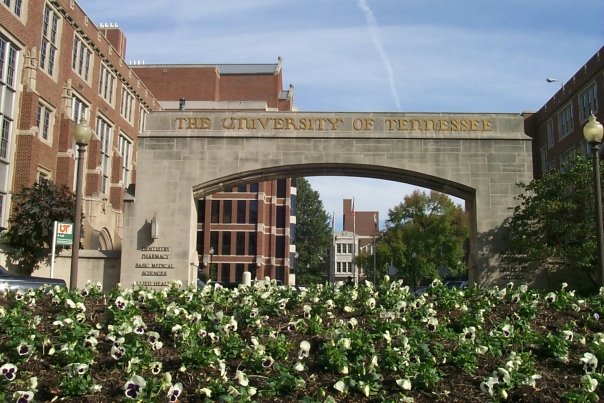The UT Research Foundation is believed to be the second-oldest university research foundation in the country. Originally organized in 1934 as the UT Research Corporation, and reorganized in 2003 as the UT Research Foundation, the organization has expanded from primarily promoting agricultural inventions in the 1930s to a broad range of modern research, including biology, chemistry, pharmaceuticals and alternative energy.
1930s

In 1939, the University of Tennessee Research Corporation’s first-issued patent was a device that measured the relative humidity of a gas. It was invented by Kenneth Hertel.

1940s
During the 1940s, patents included food-freezing techniques, fertilizers, insecticides and agricultural machinery. Two of the most significant products in the 1940s include the Morgan Strawberry Capper, invented by A.H. Morgan, and the Arnold Hose Pump, invented by H.A. Arnold.
- 1943: Patents were licensed for the Tennessee Shipper and the Tennessee Supreme, new fruit varieties by inventor Brooks D. Drain.
- 1946: Fritz Rosenthal’s phenolic molding compound that used cottonseed hulls as a base was licensed.
1950s
The 1950s saw steady growth of the UTRC, with several patents filed and licensed.
- 1954: Inventor Walter H. MacIntire’s treatment of alkaline waste waters was licensed.
- 1955: Kenneth L. Hertel’s apparatus for and method of testing porous materials was patented.
- 1956: A patent was licensed for Arthur H. Morgan and Guy A. Shuey’s machine for processing sliced material.
- 1958: James L. Bloomer and Charles W. Keenan received a patent for their processing chamber invention.
1960s

Realizing that market, business and technology trends would have an impact on the future success of UTRC, the sixties were a time of lengthy study of the organization’s purpose and activities.
- Nearly 20 patents were issued to UT faculty in the 1960s. The inventions were primarily in the areas of textiles, agriculture, engineering, and chemistry.
- 1962: Patents were licensed for Hugh G. Neil’s apparatus for determining the physical properties of porous material and Judson H. Robertson’s apparatus for measuring vapor density.
- 1969: Arthur H. Morgan’s vegetable and fruit harvester was patented.
1970s

The 1970s were transitional years, as products shifted from agricultural and mechanical inventions to discoveries in biology, chemistry and pharmaceutical compounds.
- UTRF created the Institute for Aural Rehabilition, which sold electro-acoustical equipment (called “Suvag”), under an agreement with Yugoslavian inventor Petar Guberina. The equipment was used for hearing-impaired therapy and training. In the 1980s, UTRF stopped selling Suvag.
- A self-study committee found that UTRC was filling an important role not only as a holder of patents, but also as an important link between the university and the public.
- 1979: UTRC’s first executive director, William A. Goodwin, was hired.

1980s
The 1980s included the expansion of the board of directors to include representatives from each UT campus, university-wide administration, business leaders, and government officials.
- 1980: W. Ken Stair became executive director, and the Mid-South Archaeological Center was initiated.
- 1982: Preston Dorsett’s discoveries led to the development of a test to detect rubella virus-specific antibodies in humans and the founding of Viral Antigens, Inc., which currently sells under the Meridian Life Sciences brand.
- 1983: A new executive director, Kenneth W. Heathington, was appointed to the UTRC board. Ann Roberson became the assistant director and legal counsel.
1990s

During the 1990s, UTRF received its first $1 million licensing fee, and opened a branch office at the UT Health Science Center in Memphis.
- 1998: Drugs to treat prostate cancer and chronic muscle-wasting conditions were developed by Drs. Mitch Steiner and Duane Miller. The drugs are currently being commercialized by GTx, Inc., founded by Steiner in Memphis.
2000s

- 2003: UTRC was renamed and reorganized as the UT Research Foundation (UTRF), with increased emphasis on entrepreneurship and economic development for technology transfer. A new set of bylaws and a new board of directors were established.
- 2008: UTRF’s business incubator opened to support and develop new high-tech businesses.
- 2009: UTRF’s focus on technology transfer expanded to include the development and promotion of sustainable energy, including Genera Energy LLC, and plans for the Tennessee Solar Institute and Tennessee Solar Farm.
- 2010: The Tennessee Solar Institute began operations.